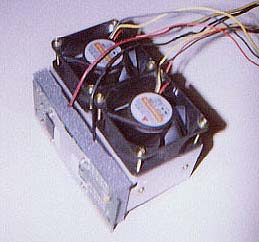Op Ars Technica is een interessante guide gepost voor iedereen die wil weten wat een peltier koeling nou precies doet. Het stuk is erg theoretisch, maar goed te lezen.
Met Peltier koelers kunnen erg goede resultaten worden bereikt, maar het is wel een dure hobby.
Peltier coolers, also known as thermoelectric coolers, are solid state heat pumps that, with the application of electrical current, transfer heat from one side of the device to the other. While the amount of heat reduction they can achieve varies with the quality of Peltier, a temperature differential between the two sides of 130°F (55°C) is not out of the question for a very high-end model. Less godlike models can produce about three quarters of that. This can mean some serious cooling for your CPU. Caesar, for example, saw a difference of a full 33ºC between conventional and Peltier cooling on the same system. [break]Er wordt wel gewaarschuwd dat je ervoor moet zorgen dat het beestje wel genoeg power krijgt, anders kunnen enkele problemen je te wachten staan:[/break] Why should you be so concerned about your Peltier getting enough power? Because a non-functioning Peltier could actually be worse for your CPU than having no cooling at all! A non-functioning Peltier could actually be insulating your processor, because the Peltier element is not a good conductor of heat in and of itself. Most Peltier devices use bismuth telluride because it is both an excellent conductor of electricity and a poor conductor of heat. That kind of insulation is very bad, even for a non-overclocked CPU. Because the inside is air-tight, a non-functioning unit will produce conditions analogous to the inside of your mamma's El Camino with vinyl seats parked at the K-Mart in Phoenix on July 1st.
 |
